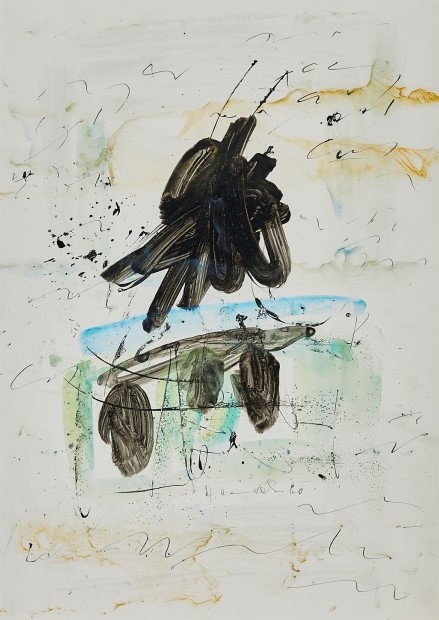Hans Staudacher (1923 St. Urban – 2021 Vienna)
is one of the most important representatives of Austrian post-war art and lyrical Informel. Coming from a modest background, he began drawing and painting watercolours at an early age as a self-taught artist. In 1950, he moved to Vienna, where he was influenced by the works of Alfred Kubin, Egon Schiele and Gustav Klimt.
As a member of the Vienna Secession, he participated in their exhibitions. In the early 1950s, Staudacher turned to gestural, colour-intensive painting. Stays in Paris (1954–1962) brought him into contact with Georges Mathieu and Lettrism, as a result of which characters and spontaneous gestures became central elements of his work. In 1956, he represented Austria at the Venice Biennale, and in 1965 he received the main prize at the Tokyo Biennale.
From the 1960s onwards, Staudacher developed a distinctive abstract visual language in which emotion, rhythm and symbols merge. In 1976, he was awarded the title of professor, followed later by numerous honours, including the Culture Prize of the Province of Carinthia (1989) and the Golden Medal of Honour of the City of Vienna (2004). His works have been exhibited internationally – for example at the São Paulo Biennial (1975) and the Museum of Modern Art in Bolzano (1994) – and are now part of important collections, including the Albertina in Vienna and the Museum of Art in Cincinnati.


